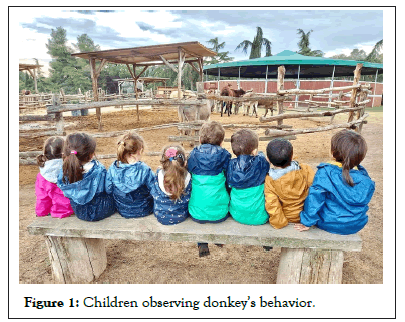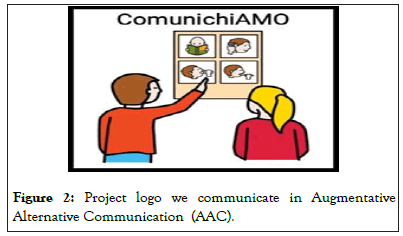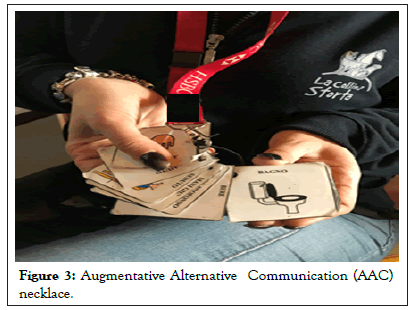Autism-Open Access
Open Access
ISSN: 2165-7890
ISSN: 2165-7890
Mini Review - (2023)Volume 13, Issue 1
We propose a description of the ecological approach in relation to autism with the ultimate aim of seeking, through a structured pedagogical process declined on several scientifically proven methods, a new way of understanding the values of the individual and the community that takes into accounts the specificity of each. The focus of the article can be traced to the importance of experiencing nature and contact with it through activities that go to reinforce the concepts of biodiversity and neurodiversity, considered an extension of biodiversity, and at the same time to trace a therapeutic path understood here as a life path.
Neuro diversity; Autism; Pedagogy; Ecological
The biodiversity as an example of neurodiversity
The ecological approach that we intend to describe focuses on autism in order to arrive at a new awareness of the world that upsets life expectations and redesigns everyone's ways of existing. Through this approach we seek the key to understanding that is capable of re-establishing the values of existence of the individual and society, tracing a path in which experiences in natural contexts, pedagogically conceived, become elements of a more complex, broader and deeper process.
What we offer is a vision of the whole that lets go of labels and diversifications; it is a vision that aims rather to see how much the specialness of each person brings positivity to other people and, moreover, how much this person is embedded in specific social and natural contexts that are necessarily influenced by them. We therefore speak of neurodiversity, considered as an extension of biodiversity.
Biodiversity is the coexistence, in the same ecosystem, of different animal and plant species in equilibrium by virtue of their reciprocal relationships, capable of generating a wealth of infinite possibilities for life on earth thanks to the biological variability of genes, species, ecological niches and ecosystems.
Just as in biodiversity it is the variety of all the elements present that creates harmony and specificity of that particular ecosystem, in neurodiversity each person is important and plays a fundamental role in the harmony of that social context.
Our cooperative has been operating on Roman soil for more than twenty years and specializes in the treatment of autism spectrum disorders and related syndromes. Our mission has always been to provide all the children and adults that the cooperative follows and their families with the support they need to live a life to the fullest potential; a life of skills but also of joy, happiness, well-being and harmony with the world around them.
The work of the cooperative draws its initial inspiration from Schopler's work [1], going beyond it, enriching it and implementing it in a profound harmony with nature while at the same time making it something profoundly new. It is a work that has opened up to various collaborations. One of the most important of these is with Ron Larsen, an American therapist and scholar who also makes reference to Schopler, adding new activities to the therapy and extending it to autistic adults in order to get them into work and make them more independent.
Ecological intervention is therefore based on the specific developmental capacities and interests of the person with autism, with a focus on fostering the acquisition of sensory integration that can support growth in an individualised manner. Underlying this approach is the study of ethology also applied to persons with autism, environmental education, ecology, and the enhancement of biodiversity and biophilia. As Stefano Bettera writes (Bettera S.D 2022) [2], the ecological approach is understood as a lens through which to observe and analyse the world; communities are systems made up of multiple interconnected layers, and people's behaviour can be better understood when it is studied through different levels of analysis. Problems are seen as the result of the relationship, over time, between individuals, settings and systems.
These links that exist between people and their environment form the basis for a socio-ecological approach to health. There is no separation but connection, identification is created, at a deeper level. Understanding that life happens, in all its aspects, and does not only affect others, can be a great opportunity that makes each individual existence different from the others. In this very condition lie the beauty, enchantment and poetry of all life. This new point of view moves us away from a narrative that sees certain neurological characteristics as necessarily problematic or inherently deficient, shifting the focus instead to individual characteristics. Only from here can an equal and reciprocal discourse begin. Different does not mean inferior or defective but having a different way of perceiving reality and interacting with it.
Temple Grandin's [3] life breaks down the concepts of disorder, deficit and emphasizes those of recognizing and valuing the specificity of each person. It is fundamental to carry forward the message that each of us has a particular and peculiar way of learning, of thinking, of interacting. The full inclusion of everyone in social, affective, working, educational life can only happen through the valorization of differences.
The model stems from the study and analysis of international intervention models, such as:
AERC (Emotional Activation and Body Reciprocity)
This work has an ethological basis and a neurobiological counterpart indicating that short, intense motor activities bring about a profound change in neurotransmitters that are the counterpart of the change in the child's mood and participation [4].
The TEACCH (Treatment and Education of Autistic and Related Communication Handicapped Children)
As Trehin [5] emphasises, it is not a method, but a state programme that was created to serve the autistic population of North Carolina, aimed at fostering the autonomy and independence of autistic individuals, supporting them throughout their lives, through a functional readjustment of the environment that favors the expression of the abilities present in the person [6].
• Ron and Linda Larsen's centering on children based on the application of the TEACCH model, this is a material factory called Shoebox Tasks to facilitate learning and independence designed and built through autistic workers [7].
• Kerry's place autism services in Toronto, in which due to territorial distances and adverse weather conditions, children are cared for in their natural setting by caregivers who are also trained remotely and supervised on an ongoing basis.
• The academy for Autism in Orlando, where for a developmental and integrated approach, professionals with different training coexist, depending on the developmental stage being considered.
• The Early Start Denver Model for incidental learning and stimulation in spontaneous contexts of language and social performance.
• The Dir and Floor time model that aims to build a strong foundation for social, emotional and intellectual skills by promoting developmental processes.
• Sensory integration that focuses on the sensory needs of the person i.e., offering the opportunity to also have protected and calming spaces and materials individualized to their needs.
• Forest therapy and forest bathing are wellness practices based on the importance of relationship with nature.
• Animal-assisted Interventions (IAA) through living with animals, humans can find benefit from a physical and motor point of view as much as from a mental and cognitive point of view. These interventions can have playful as well as therapeutic enabling and educational intentions, depending on the areas of the activities or the animal chosen.
• Mindfulness in nature is a generic term used to characterize a large number of practices, processes and characteristics, broadly defined in relation to the capacities of attention, awareness, memory, acceptance and discernment. Mindfulness activities within a natural setting, such as the bee house we experienced, aim to stimulate well-being by developing bodily and emotional balance. Here are its benefits: reduces stress, promotes frustration tolerance, and develops coping strategies.
•The outdoor education, learning and therapy are shown in Figure 1. There is a strong connection between people and the context they inhabit for educational purposes, aimed at environmental and social sustainability. In particular, Higgins and amp; Nicol [8] highlight how out of doors spaces can be privileged places of cooperative and personalized learning, emphasizing the role played by an adult capable of taking advantage of the educational opportunities offered by different territories and contexts in relation to different learning styles. Outdoor Education processes are characterized by the placed-based pedagogical approach, aimed at the discovery and enhancement of specific cultural and natural peculiarities, to literally make them a field of inquiry aimed at an effective construction of individual and social identity (Figure 1) [9].

Figure 1: Children observing donkey’s behavior.
The approach we have chosen to use we refer to as the integrated ecological approach; it is not a method but an approach that diversifies according to the child. The approach we use being not a method but an approach, is flexible and adaptable to everyone's different needs and contexts, and allows the best parts of other methods to be integrated, harmoniously.
The ecological approach to autism is an integrated approach that responds, first and foremost, to the needs of people with autism, their families, and their caregivers; but it is also meant to be an answer for everyone who wants to live a satisfying life, in balance with the surrounding environment, which is the basis of every individual's well-being and happiness. Underlying this approach is: the study of ethology also applied to people with autism, environmental education, ecology, and the enhancement of biodiversity and biophilia.
The ecological approach is understood as a lens through which to view and analyze the world: communities are systems composed of multiple interconnected layers, and people's behavior can be better understood when it is studied through different levels of analysis. Problems are seen as the result of the relationship, over time, between individuals, setting (=environment) and systems: these can be addressed by making changes in living contexts and promoting people's abilities to use their resources. Thus, it is a principle based on the idea that the environment and the different living contexts in which each person is placed, significantly affect people's behavior.
Bronfenbrenner argues that the developing individual cannot be seen as a tabula rasa that the environment shapes or rather;
These links that exist between people and their environment form the basis for a social-ecological approach to health.
A child's development is influenced by the environment and the complex web of factors that affect it. The ecological approach allows us to grasp development in its complexity. Learning means optimizing perceptual processes and developing the ability to dictate appropriate stimuli. For Gibson, the subject is capable of perceiving what the environment allows him to do, taking into account his physical and motor abilities, according to his age, size and level of experience. Our approach is based on previous work of children followed in 2012 in collaboration with the child neuropsychiatrist at the Bambin Gesu Hospital in Rome, which has demonstrated its validity [10].
In this context, various projects are born, one of which is aimed at children and their families, another, the Bridge Project for children aged 18 and older. And others such as UnApe per Amica, supported by the Italian Buddhist Union and in collaboration with the Mirijac cooperative, aimed at young adults to develop a tendency to learn about nature and biodiversity. , and the project comunichiAMO in Figure 2, promotion of augmentative- alternative communication for the educational and social inclusion of children and young people , for which we thank the 8 × 1000 from the Italian Buddhist Union.

Figure 2: Project logo we communicate in Augmentative Alternative Communication (AAC).
Many young people and children with autism have communication deficits and Augmentative Alternative Communication (AAC) is the key that allows the child to express himself and communicate with others as shown in Figure 3. AAC is the set of all visual aids that facilitate communication, also allowing them to go and develop communicative intentionality that is often lacking in autistic individuals. AAC is also great for anyone who does not know the local language well and needs visual support to be able to express them and thus feel included (Figure 3).

Figure 3: Augmentative Alternative Communication (AAC) necklace.
The place where we realized our vision is La Collina Storta in Rome, a place surrounded by greenery; a large, well-kept space where beauty frames the interactions between animals, plants and people with the most diverse abilities. A place that hosts horses, donkeys, chickens, dogs and various other animals and in which habilitative projects for children and adults with autism, and various aggregating activities are carried out; the most important aspect is that the place is open to everyone and anyone is welcome to spend a day outdoors.
Walking down the avenue, one can see a pine tree, then an oak tree, a parrot flying and then a turtle dove, an autistic boy carrying a wheelbarrow and a child playing with a dog, all accompanied by the braying of the donkey who saw the carrots coming. The diversification among all the components is the real beauty of this place.
Autism in this way is no longer seen only as a neurodevelopmental disorder but as a way of being, a different way of perceiving reality, a fascinating way that enriches the whole place, just like the mimosa plant at the entrance.
For there to be harmony among all the components it is necessary first of all for beauty to be the frame within which it all moves, being in a beautiful, clean and well-kept place leads people to develop more empathy toward the place and toward their neighbors. The criminological based theory of broken windows comes in support [11]; if a place is degraded it increases the risk of developing crime, which is why educating for beauty is equivalent to educating for respect.
The activities carried out fit into a framework of harmony, joy and sharing. Beauty arises and is expressed through the interaction between the place, the plants and animals that are part of it, and all people with the most diverse abilities. The attempt is to recreate a space of active pedagogy which aims to raise awareness towards autism and the environment.
The autistic children who carry out the projects at la Collina Storta crooked in addition to carrying out individualized activities aimed at achieving their own goals, take care of the place and the animals; they organize the parties and are an integral part of this splendid example of inclusion, cheerfulness, respect and neurodiversity. In the space designed for their needs, there are several individual or group lavotro tables, including outside, and calming space or noise-free relaxation areas with soft corners, sensory materials, hammocks and jumping jacks to relax when needed. They can walk the entire perimeter without encountering obstacles and safely to defatigate moments of stress and increase self-regulation.
In particular, we have created a bee house that overlooks beehives. The sound of bees, the smell, and the sight of these animals facilitate relaxation and self-regulation through the support of mindfulness and breathing techniques.
If children do not have a healthy relationship with nature, biophilia is not stimulated and nature intelligence atrophies, causing a set of impairments in children's mental and physical development that American journalist Richard Louv has called Nature-deficit disorder.
Outdoor activities in contact with nature have a strong didactic and educational potential: contact with greenery and engagement in activities involving nature, in fact, teach respect for the environment, encourage a sense of responsibility and of autonomy and contribute to the strengthening of self-esteem. They also promote the development of sensory solicitations and sociality, promoting social inclusion. This type of teaching allows children to freely explore the surrounding space, playing and experimenting with the different materials that nature provides.
[Crossref] [Google scholar] [PubMed]
[Crossref] [Google scholar] [PubMed]
Citation: Sonnino F, Granatelli C, Zargar M, Catena M, Lattanzi F, Nazzicone S, et al. (2023) An Ecological Approach to Autism: Open Access. 13:360.
Received: 30-Jan-2023, Manuscript No. AUO-23-21803; Editor assigned: 01-Feb-2023, Pre QC No. AUO-23-21803 (PQ); Reviewed: 15-Feb-2023, QC No. AUO-23-21803; Revised: 22-Feb-2023, Manuscript No. AUO-23-21803 (R); Published: 01-Mar-2023 , DOI: 10.35248/2165-7890.23.13.360
Copyright: © 2023 Sonnino F, et al. This is an open-access article distributed under the terms of the Creative Commons Attribution License, which permits unrestricted use, distribution, and reproduction in any medium, provided the original author and source are credited.